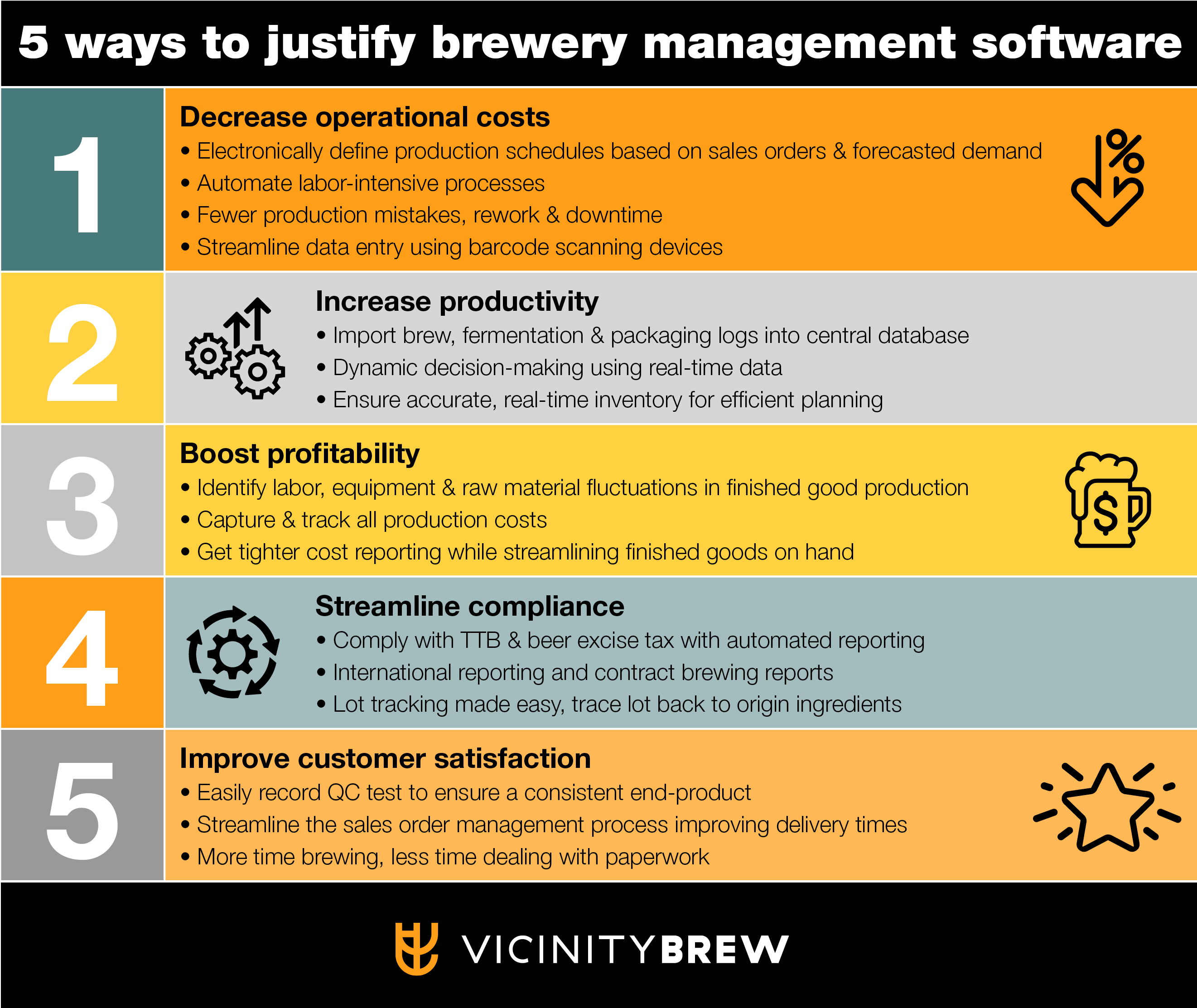What factors should you consider when calculating your software ROI?
Making the business case for any significant expense involves some degree of a return on investment or ROI analysis. While business owners understand that it costs money to make money, the difficulty of balancing that equation can vary widely depending on the type of investment you are making.
Investments with fixed costs that directly affect business revenue, like equipment purchases such as fermenters or bottling lines, will follow a very simple formula. For example, a tank will cost a certain amount and will increase your brewing capacity by a number of barrels. This additional capacity will thus create a certain amount of additional profit per month, and therefore this tank pays for itself in a calculated number of months.
Other investments, however, may not have such a direct impact on revenue streams, and therefore the factors are a bit less straight forward. Investments in items such as accounting software can have dramatic effects on the bottom line without ever touching a business revenue stream.
So what factors should you be considering when calculating your software ROI?
Productivity
Will your software save time by reducing the time it takes to enter your data or by reducing the number of people who ‘touch’ it? Will it cut down on the number of spreadsheets or other offline applications each housing their own variations of the truth?
You can reduce or offset the cost of labor by eliminating double entry from the brew floor to accounting, procurement, or even QC departments. This streamlining of the data process will decrease or eliminate hours of your staffs’ time as well as the potential for entry errors and misinformation. One of the easier factors to calculate increases in productivity revolve around labor related to data entry and review. If having connected data saves you 10 hours a week, you can save roughly $800 each month ($20/hour x 10 hours’/week x 4 weeks in a month).
Opportunity Cost
Strategic investment can help pay for itself many times over by creating efficiencies, but larger “savings” are made in supporting growth opportunities. Calculating the opportunity cost on a potential missed opportunity is a fair consideration as well. Being able to deliver consistent quality beer is key to maintaining and building your relationship with distributors and customers.
Missing a deadline or falling through on a promised order could not only burn a bridge but could potentially end up in a lost account. Alternatively, being able to support a distributor’s demand can help positively influence future orders. Having timely communication between sales, distribution, and production can help protect and strengthen your brand’s relationships. Calculating revenue on future sales, and putting a value on a particular account’s impact on your business can be difficult without a brewery management solution. Both are heavy influencing factors when trying calculate your software ROI.
Accuracy & Reporting
Eliminating multiple sources of data will allow your team to focus on the validity of the data available. Being able to collect different data sets such as raw material production usage, labor, overhead, and packaging costs will strengthen and streamline your reporting efforts with more complete information. VicinityBrew Software provides you with the ability to collect a comprehensive account of your brewery’s operations directly tied to industry reports such as the TTB Brewers Report of Operations.
Here are 5 ways to justify your brewery management software expenditure
- Decrease operational costs
- Increase productivity
- Boost profitability
- Streamline compliance
- Improve customer satisfaction

Do you know:
· “Which of your brands are really driving profit for your brewery?”
· “Are your brands positioned correctly in the market?”
· “Are you pricing your SKU’s to properly cover costs?”
By gaining this thorough picture of your overall business, you can use the information to make decisions regarding the future of your brewery.
Connecting departments with a shared database pays dividends beyond feature functionality. Access to comprehensive data changes the conversation from return on investment to return on information.
Having a software solution empowers your organization beyond a direct software ROI analysis. The information collected and insight gained will help your brewery to make strategic decisions and set future goals. If you would like to learn more about VicinityBrew Software or want to schedule a demo, contact us today!
